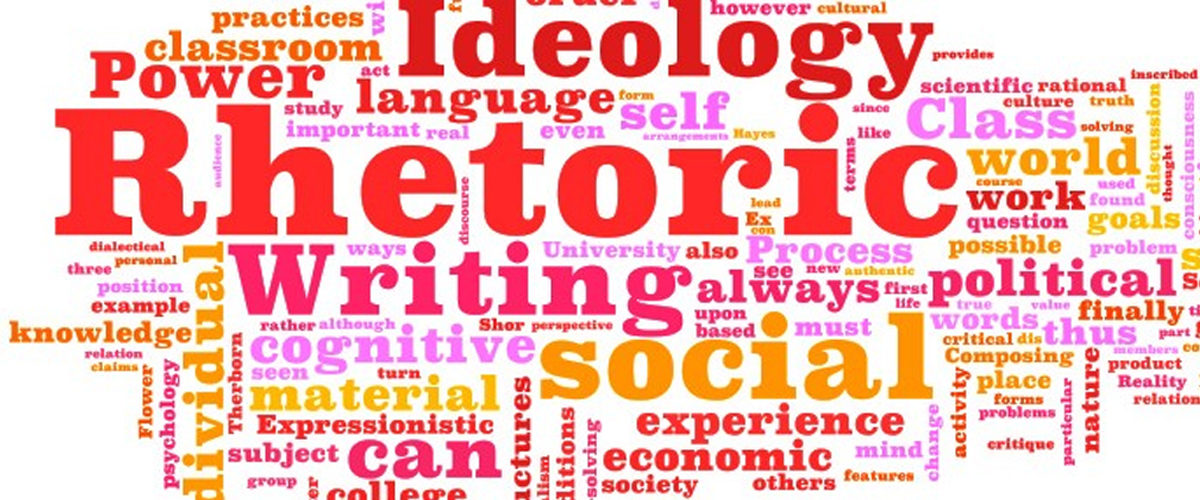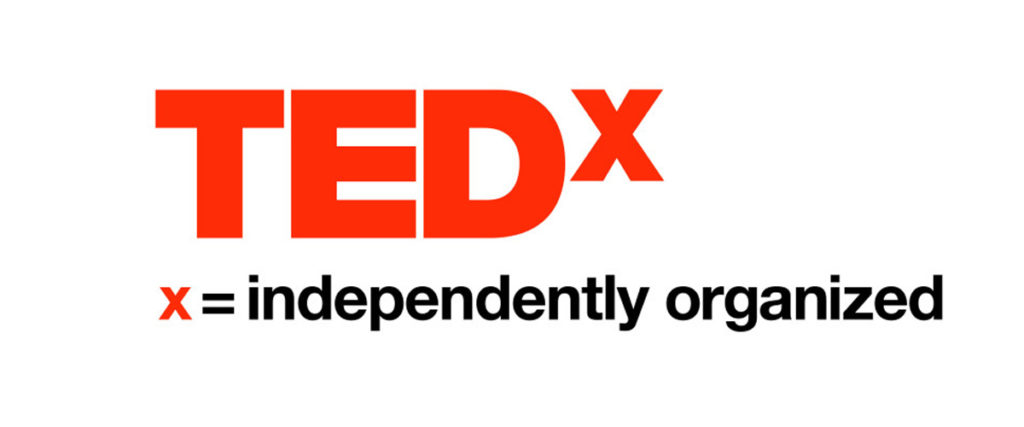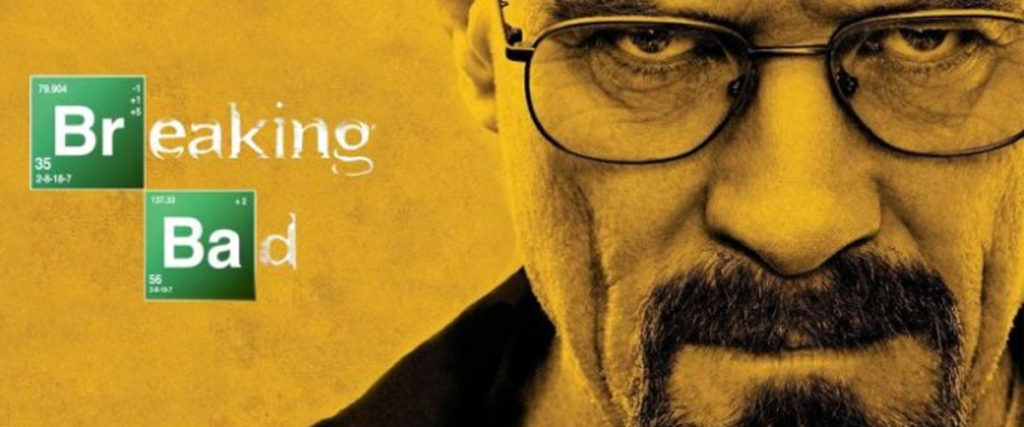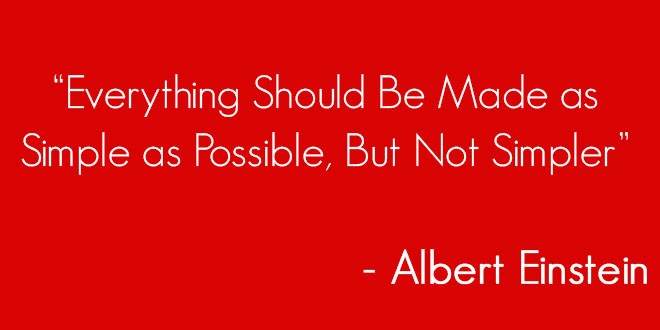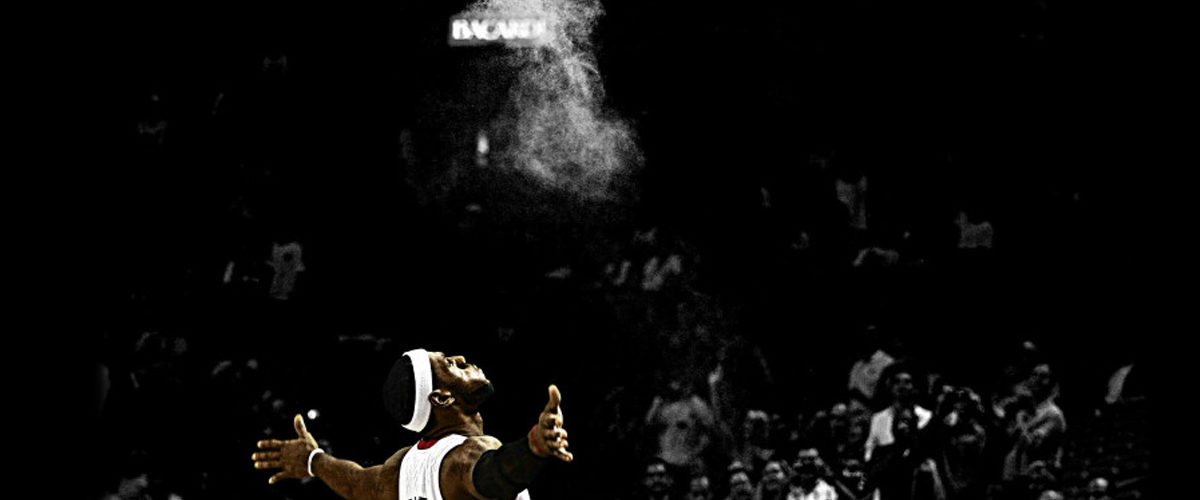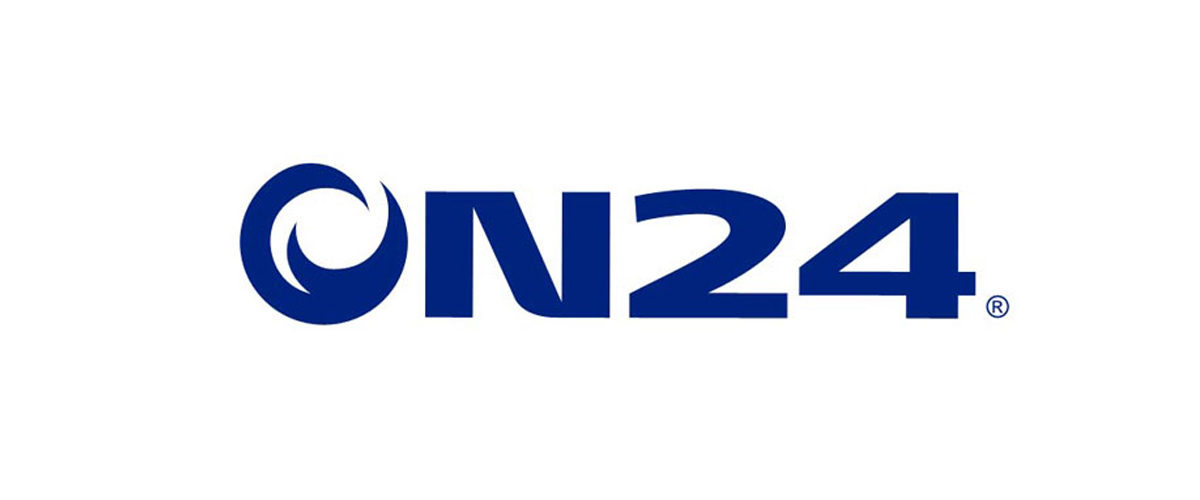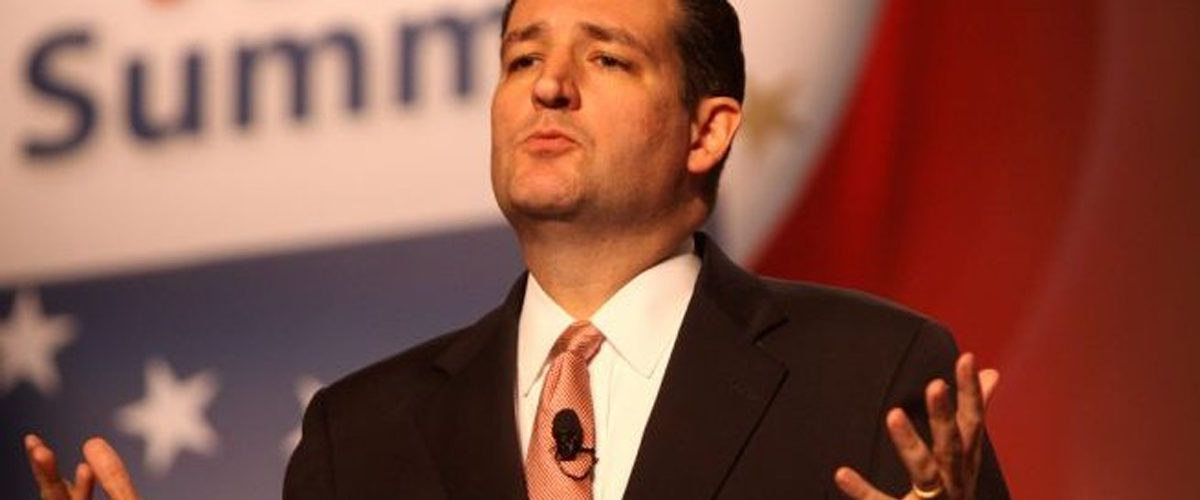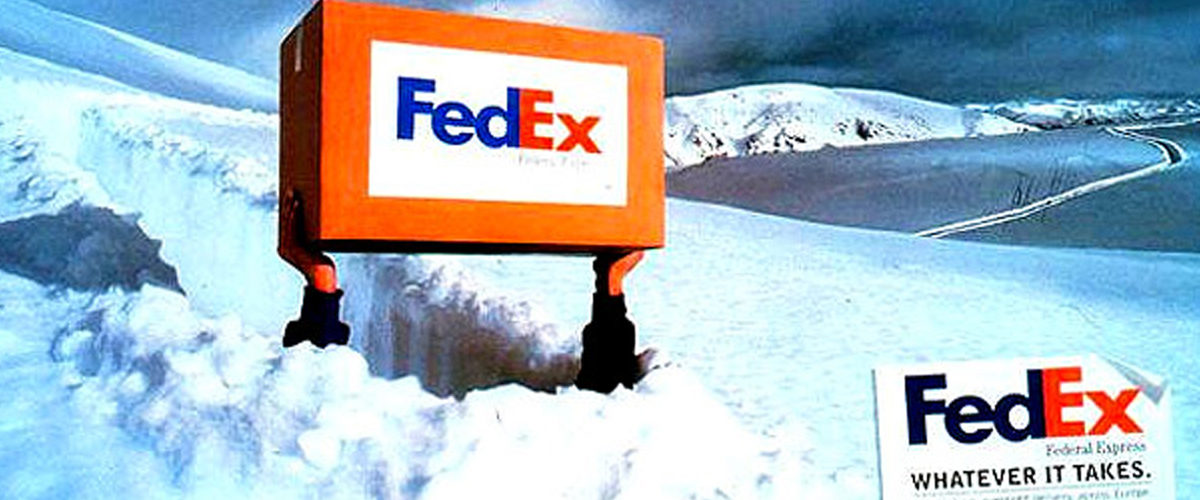Remapping the Self: A TEDx Talk with Erika Casriel
How does one define themselves? Why is it that we tend to think our judgements and ideas surpass those around us; and why do our emotions play a part in this? Psychology journalist Erika Casriel discusses new developments within the neuroscience field in a describing a new concept titled, “conciocenterism”, an idea she presented with TED, an organization that broadcasts “ideas worth sharing”.
SlideGenius developed her TEDx Presentation which you can watch here.
Some of Erika’s presentation ideas about this revolutionary notion of “conciocenterism” included concepts such as, instead of thinking of ourselves as the center of the universe we must challenge ourselves and see the more rational sides of our emotions and actions. Her theory challenges us to step outside ourselves and silence the illusion of the “little man inside our mind”. She provides a great analogy stating that instead of seeing ourselves as the lead actor in our life we should place ourselves within the audience position as well; therefore not letting irrational emotions and single minded judgments get the best of ourselves but to look at the bigger picture.
This idea of drifting away from egocentrism can also be tied back into giving a presentation, as you as the presenter must see both sides of the picture in order to connect with your audience by allowing them to see your inner thoughts as well.
References:
Casriel, Erika. “Remapping the Self: Neuroscience Gets Personal.” Lecture, Navesink, January 1, 2013
“Why Your Presentation Needs to Be These 3 Words.” SlideGenius. January 5, 2014.
Dress to Impress : How to Deliver a Successful Presentation
Recent research concludes that all great presenters are born with a very specific mutation in their DNA that allows them to connect with their audiences every time.
Obviously false. Great presenters are simply people who have practiced enough that they are confident in themselves. A successful presentation requires constant coordination of content, delivery and audience interaction. Proper content, delivery and audience interaction, along with confidence and passion are root from one single trait, preparation. Would you go out naked and dirty? No, you shower, dress up, and look good; same goes for your PowerPoint presentation.
Presenters commonly overlook proper preparation. The fact of the matter is, preparing powerpoint slides isn’t just making the deck look good. You need to prepare yourself, your clothes, your speaking volume and speed and even your audience. There are 3 tools to make sure you are preparing the right way for your presentation:
1. Know Yourself
Giving presentations is very similar to telling a story, and having personal anecdotes is a great way to improve your audience retention. Audiences remember stories better than anything! Why? Because they can relate to every story in some way, so use that connection to your advantage.
“There are no secrets to success. It is the result of preparation, hard work, and learning from failure.”
-Colin Powell
2. Know Your Audience
Whether you’ve been asked to be a keynote speaker, pitch a venture, or talk to preschoolers, the first step is to research your audience. Knowing the audience provides you with information necessary to craft an effective, well received presentation. Things to focus on are: audiences’ level of sophistication in the topic you’re presenting on, holistic objectives and common topics of interest. Rick Wion, director of social media for McDonald’s once said, “If you don’t know your audience, you are pretty much guaranteed to fail. Your presentation could be too rudimentary, too advanced or completely off topic without understanding the core audience.” That is all.
3. Know Your CTA
Three words: Call-to-Action. This is what you leave your audience with. After the introductions, stories, laughs, or whatever you do, lies the most essential part of your PowerPoint presentation design, the next step. This is where you highlight the purpose of your presentation. What do you want your audience to do next? Give you CTA the time and energy it deserves, which I will say, should be A LOT! Check out our article all about Calls-to-Action.
Aftermath
It’s Not Over Yet! After you’ve finished speaking, it’s the perfect time to finalize your relationship with the audience. Giving a presentation creates a unique opportunity to build your brand, so take advantage of it. Lastly, be sure to get feedback from attendees and event organizers so that you can make your next presentation even more effective and memorable!
Work Cited: http://mashable.com/2012/02/03/improve-business-presentation/
What Breaking Bad Can Teach Us about Closing a Presentation *No Spoilers!*
Breaking Bad, AMC’s hit crime drama we’ve all come to know, love, and mournfully wave goodbye too, ended two weeks ago in a (without giving too much away) justified, epic climax after five seasons of watching Walter White (A.K.A. Heisenberg) turn from sheepish high school chemistry teacher to roaring meth kingpin.
For those of you who haven’t seen BrBa to its bitter-sweet end, I won’t go into details. What I will say of it is that I was thoroughly pleased with its conclusion, but not altogether satisfied, which is exactly what a great ending should be.
Ending our presentations requires the same careful planning. The show’s infamously meticulous Executive Producer Vince Gilligan put a great amount of thought and effort into the show’s final chapter, and that’s because he knows what his audience is going to remember.
There’s a famous saying in the sports world: “You’re only as good as your last game.” From this, we can take away that we’ll be remembered for our most recent victory and defeat. Our significance is who we are today. For a TV show–and for a presentation–the finale, or the closing, will be what is most remembered.
Even if the first 90 percent of your presentation is brilliant, but the last 10 percent is a total wash, guess what they’ll remember from the presentation? The horrific ending. Fair? maybe not, but definitely the reality.
So how to make sure your audience is left with the perfect ending? Here’s a few things Breaking Bad executed flawlessly that we can work into our presentations.
Leave Your Audience Wanting More
I previously stated that Breaking Bad’s ending was fantastic, yet not entirely satisfying. This is because, to me, the show ended at its peak, which I believe is precisely what Gillian planned. The series had a great story arc that resolved all issues, but we all still wanted the show to go on.
You don’t want your audience counting the minutes until you stop talking by the time you’re on the later half of your presentation. In fact, you should end the presentation saying everything you need to say, but your audience wants to keep listening. This will not only have them leaving with a favorable impression of you, but it will keep you and your presentation on their minds, ultimately leading to your information being better retained.
There’s a big difference between a show ending at its peak and one that ends open-ended and often confusingly (I’m looking at you, Lost).
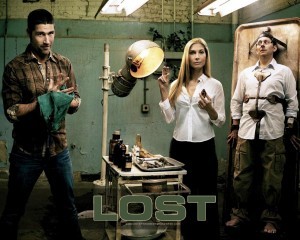
Make sure everything in your presentation is adequately addressed and all questions answered. Many presentations leave their audience almost more confused that when the presentation started. A great way of ensuring your audience understood what you had to say is to leave time at the end for a Q&A session. At SlideGenius, we recommend to allot an equal amount of time for your Q&A session as for your presentation.
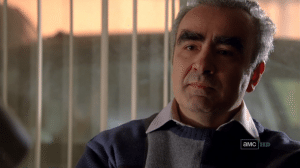
Breaking Bad brought it all back out of the wood works for the finale. Characters we hadn’t seen in a couple seasons come back to life to be part of this modern-day western, and the episode even opens with Walter White back in his early meth-cooking days, where he still lies to his wife about having to work late at the car wash for its egotistical owner Bogdan. Don’t just end, recap. Remind them of your key points and overall message. Ending on your last point will likely reinforce the idea that the last point is the oly thing to take away, when it’s usually just one of many that you made.
10 Words to Cut From Your Presentations
Thomas Jefferson famously wrote, “Never use two words when one will do.”
Dr. Seuss, Steve Jobs, Albert Einstein, and Bill Gates all had an underlying focus on simplicity in their work. Simple ideas by definition are easier to understand and are therefore more likely to be successful. Most presenters focus on shoving as much information possible in their PowerPoint presentations, but the fact of the matter is, the less you say, the more your audience will understand. That doesn’t mean cut parts out; it means simplify every part as much as possible. This process should be utilized for both the written text within the deck, and the words that you are saying. The best way to get started with simplification is to learn to avoid certain “fluff” words.
Aim to make your writing and presenting more powerful, so here are 10 words you should start avoiding:
1. Got
Using “got” wastes valuable opportunities to use specificity and effectively describe your work process. Got is a highschooler’s word that serves no purpose in a professional PowerPoint presentation.
2. Just
The word “just” is a useless filler word (unless being used in the context of something being just or unjust) that elongates your writing for no reason and wastes times. Wasting time is the same as saying decreasing focus and interest from the audience.
3. Really
Using the word “really” is very common and almost seemingly natural within verbal conversations. It’s a type of verbal emphasis that doesn’t translate well into text. Despite its popularity in conversation, it’s unnecessary, and should, therefore, be cut
4. Then
“I talked to the customer then she yelled at me then I realized what I needed to change then I told my team.” You see how annoying and wasteful the word “then” can be? Cut it!
5. Maybe
The last characteristic you want to give off to your audience is uncertainty. When you use words like “maybe” and “perhaps,” uncertainty is exactly what you’re communicating. If you lack confidence in any aspect of your service or product, why should I be confident in it?
6. Um
When someone uses “um,” he or she either immediately shows three things: uncertainty, lack of confidence, and lack of professionalism. “Um” is worse than filler words because it not only shows that you are wasting time, but it shows you’re nervous. Cut it!
7. Literally
Regardless if something is true in a literal sense, you still don’t have to add the word “literally.” Only in an attempt to explain you aren’t joking when it seems you are, is it beneficial to use this word.
8. Amazing
This word is used to describe so many levels of quality that it is now virtually useless. Use more specific words to describe the great quality of whatever you’re talking about.
9. Things
Much like “stuff” “things” is vague and useless.
10. Stuff
“Stuff” is casual, vague, and consequently a waste of time. Description and specificity are powerful when used tacitly.
All in all, I’m trying to help you cut the fillers, get rid of the “fluff”, and make your writing and presenting stronger. The best way to achieve that goal is to start with a tangible next step. That step should be to avoid these 10 words at any cost.
Why You Need Work With The Naked
Effective design is about displaying things as naked as they can be.
Effective design is about displaying things as naked as they can be. Let me explain. If two competing stores are selling orange juice, one markets the history of the store, the science behind the juice, the percentage of pulp in the juice, the work from the staff, and types of furniture in the store, and the second store uses only a picture of a juicy, ripe, and delicious-looking orange, would sell more? The second, obviously! Sales are about getting customers to get emotional about your product or service, while the former store may have its own advantages in marketing, the latter is focused solely on showing their product at its very simplest and purest form, an orange. It is almost completely pointless to describe everything about your business or product. People don’t have time for that. They want your message and pitch in the quickest, cleanest, and purest form possible.
Did Steve Jobs walk on stage and describe all the technical characteristics of the IPod? No. He walked up; stood mid stage, and said “It’s 1000 songs in your pocket.” While there is value in the details, it’s the nudity and bareness of a presentation that hold the value. Sell the core essence of whatever your selling, at the end of the day, it is what people remember, and therefore what you should maximize in your professional presentation design.
In aims to practice what I preach, Ill keep this post short. Ill finish with this; I could go on to write a book about simplicity, the art of persuasion, or even rhetoric, but there’s no need, because I’ve displayed the same message in less than 500 words.
Next time you start work on your next sales pitch, PowerPoint presentation, or really just anything, just take a minute and ask yourself, “Am I doing this in the most simple and effective way?” I guarantee it will change everything about your life.
Work Cited:
Http://www.fastcodesign.com/3018872/can-flat-design-change-an-entire-culture-built-on-ornateness
What Professional Athletes Can Teach Us about Preparing for a Winning Presentation
There’s a saying in the sports world that 90 percent of performance is mental.
This isn’t to say that all the intense physical preparation, practice, and training for the big game won’t have a huge effect on an athlete’s performance, but none of that hard work will matter without being mentally prepared for the pressures of high-level competition.
Similarly, while it’s obviously vital to practice, obtain the best professional PowerPoint possible and plan all aspects of your presentation carefully, to avoid stress and pressure affecting you at the moment of your presentation. If you’re not mentally prepared then that presentation you worked so hard to perfect might never come to fruition. Look at some of today’s top athletes, like Peyton Manning and Lebron James, prepare themselves physically and mentally before any big game and have this down to an exact science.
Visualize Success
There was a study conducted by Dr. Judd Blaslotto at the University of Chicago in which the subjects were divided into three groups. At the beginning of the study, he tested each group on how many free throws they could make.
After this, he had the first group practice free throws every day for an hour, the second group just visualized making free throws successfully for an hour, and the third group didn’t do diddly squat.
After 30 days, the groups were retested. The third group didn’t improve. The first group improved by 24 percent and the second—the ones who did nothing but sit around all day thinking about shooting free throws—they improved by 23 percent.

Visualizing success is imperative to that success manifesting itself. If you are continually thinking about all the terrible things that could go wrong during a speech, this negative reinforcement may result in a poor performance. However, if you make it a point in your preparation to picture yourself giving a winning presentation, studies show that this will have a discernible positive impact.
Golfing and Grace Under Pressure
When pro female golfer Inbee Park won the U.S. Female Open earlier this summer, she credited her success to two things: her experience and her mental health coach.
This reiterates the two-part recipe for success in both sports and presenting to an audience. Preparation, practice, and experience are the foundation for success, but mental toughness is the final ingredient to a winning presentation.

Many golfers now use a mental coach to learn how to embrace anxiety before a tournament in order to use it to their advantage. The right amount of anxiety can heighten our awareness and sharpen our senses. The trick is to stay on top of your anxieties, controlling them rather than letting them control you.
While obviously this post can’t do what a mental coach can, some important lessons a mental coach often provides are:
–Don’t carry mistakes from the previous hole through the rest of the round. When giving a presentation, don’t let past flubs haunt you. View each presentation as a unique opportunity to prove yourself.
–Deep breaths can go a long way. It will lower your heart rate and allow you to think clearly and rationally about the situation.
–Enjoy yourself. When you’re having fun, you won’t be weighed down by the pressure of the situation. Realize that people just want to enjoy your speech and have fun with it.
Maintain a Positive Outlook
Psychology today analyzed endurance sports such as marathon running and found that a key part of enduring these grueling races is mental outlook. While there isn’t as much crossover between presentation and endurance sports, there is a good lesson to learn about maintaining a positive attitude in the face of unexpected challenges, which is important when things don’t go as planned during our presentations.
“The key is how people respond to the stressful conditions,” writes psychologist Jim Taylor, Ph.D. “If you have two athletes of equal ability and one sees, for example, rain and wind as a threat that scares and intimidates them and the other as a challenge that they know they can overcome, the latter athlete will be more successful.”

So if there’s a technology malfunction, an unruly crowd , or any of the unforeseeable flubs that tend to arise, remember to view them not as a death sentence to your presentation, but as another challenge to overcome and prove yourself with.
Check out our Webinar for ON24 :Teaching the Importance of Simplicity

SlideGenius Founder and CEO Rick Enrico spoke last Thursday on the importance of simplicity in presentation design as a part of ON24’s very first installment of its Webinar Academy.
To view the webinar, titled, “Avoiding Information Overload: The Importance of Simplicity in Presentation Design,” do the quick, 1-minute registration here and view the entire webinar series created by ON24, a leading virtual communications company. Along with Rick’s, you’ll find several other Webinars that have a lot to teach about presenting in the digital age.
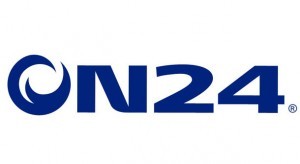
While most presentations designed by SildeGenius are given in person, the attention ON24 is giving to Webinars is indicative of a growing trend toward Internet-based presenting and how this is expanding our scope of how we can reach an audience. By viewing our webinar, you’ll see that all the key elements of an effective PowerPoint presentation are still there, but coupled with it is the ability to reach millions of people at the click of a button by creating your presentation online.
Extreme Presenting: An Example from Ted Cruz
Amid the craze of the government shutdown fueled by heated debate inside our federal government, one almost unbelievable phenomenon was the 21-hour filibuster by Texas Republican Senator Ted Cruz.
For those needing a U.S. history reminder, a filibuster is essentially when an elected official prevents anyone in his legislative body from voting by refusing to end the debate, usually, by hogging the floor talking. It’s an age-old tactic in the politician’s playbook, dating all the way back to Ancient Rome, where Roman Senator Cato the Young would give long, drawn-out speeches until nightfall to foil the political maneuvers of Julius Caesar.
This strategy still thrives in today’s political landscape, and it’s gotten no less extreme. While Cruz’s 21-hour speech may seem unfathomable, there have been several other extreme examples in modern politics. But how do these politicians prepare for these dauntingly long presentations? Here’re a few famously employed tactics that have allowed politicians to remain at the podium long after hours.
Not to be crude, but to address many of us have probably wondered: How do these politicians not run off to the restroom after all these hours at the podium?
There’s actually been a lot of unanswered questions surrounding this mystery, perhaps because it’s one we might not want the answer to.
 Texas State Senator Wendy Davis reportedly donned a catheter during her 11-hour filibuster of an abortion bill earlier this year. The 50-year-old democrat also wore pink running shoes and a back brace to remain standing and speaking to block this legislation, a move that was apparently effective, resulting in the bill failing.
Texas State Senator Wendy Davis reportedly donned a catheter during her 11-hour filibuster of an abortion bill earlier this year. The 50-year-old democrat also wore pink running shoes and a back brace to remain standing and speaking to block this legislation, a move that was apparently effective, resulting in the bill failing.
Steam baths?
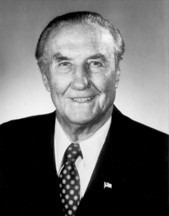
The longest filibuster by a lone senator occurred in 1957, when Strom Thurmond of North Carolina spoke for 24 hours and 18 minutes, from 8:54 p.m. on August 28, 1957 and did not stop until 9:12 p.m. on the 29th, in an attempt to prevent the Civil Rights Act of 1957 from passing. In order to prepare for this insanely long speaking engagement, Thurmond took steam baths up until the day of his speech in order to dehydrate himself, “ridding himself of any access liquid.” While speaking, other senators purposefully asked lengthy questions in order for Thurmond to quickly take a break and gobble down a sandwich in the cloakroom before running back to the stage.
21 hours of things to say
I don’t care how good of a speaker you are, even my chattiest acquaintances would have  trouble finding things to talk about for half that time. While Senator Cruz spoke primarily about the Affordable Care Act, A.K.A. Obamacare, he made a few off-color references in order to keep his train of thought going, bringing in Darth Vader and even reciting the famous Dr. Seuss children’s book, “Green Eggs and Ham.”
trouble finding things to talk about for half that time. While Senator Cruz spoke primarily about the Affordable Care Act, A.K.A. Obamacare, he made a few off-color references in order to keep his train of thought going, bringing in Darth Vader and even reciting the famous Dr. Seuss children’s book, “Green Eggs and Ham.”
My personal favorite filibuster?
Well, it’s not exactly real, but it’s the most entertaining to me. For those of you fellow Parks and Recreation fans, you might remember comedian Patton Oswalt guest starring on an episode this past season, where he ‘citizen filibustered’ the Pawnee City Council from amending its constitution.
The episode that aired only showed a small bit of what Oswald actually said. In reality, Oswald showed up, the show didn’t give him a script and just told him to “start talking.”
References:
“Filibuster”. Dictionary.com. The American Heritage® New Dictionary of Cultural Literacy, Third Edition. Houghton Mifflin Company, 2005.
“Putting Your Presentation before Your PowerPoint.” SlideGenius. December 9, 2013.
Root, Jay. “Ted Cruz Ends 2013 As He Began It: No Apologies.” The Huffington Post. December 19, 2013.
3 Secrets from the Most Trusted Brands Around
Which company would you say has the best customer service in the world?
For me, only big names come to mind. Amazon, Fedex, Starbucks, Apple, Target; all these companies are seen and valued as great empires that run the United States, and to some extent, the world. Customer service has become a major facet of how people judge businesses today. Within customer service, lies it’s core foundation, trust. When people trust a brand, they use it, recommend it, share it, and more importantly, like it.
When we discuss branding, one of the simplest and most relevant examples would probably be corporate presentations. The way quality with which one presents their company to others is the level to which their branding valued. For that very reason, being able to understand and recreate the important aspects these trusted companies currently use will be invaluable to any executive.
We decided to take a crack at it and analyze the consumer survey created by Entrepreneur and The Values Institute at DGWB, a California-based think tank, which explored this very issue. The results are an analysis of 5 of the top 10 most trusted brands.
Simple & Personal: Amazon
The tycoon online retailer of just about everything comes out on the top of our list. Amazon’s success doesn’t root from the millions of products is manages, the unlimited and 24/7 access its offers, the great quality search filter it holds, or the shockingly effective and satisfying customer service it is compromised of. Amazon is best the because of its superior purchase experience. People love things to be easy and to be treated well; two things Amazon does beautifully well.
>Additionally Amazon is arguably best at fostering relationships with consumers by helping them make decisions through recommendations from other people. “People are able to choose items based on other consumer’s past purchases, user reviews and ratings and suggested complementary purchases. Consumers also have many options for forging a personal bond with the brand, including user profiles, reviews and ratings.”
So if there is anything we should learn from Amazon, it is to make things easy and personal. This is especially true for your professional PowerPoint presentations. You must be able make things easy to understand while allowing your audience to relate to you in a variety of ways. Tell a story, show emotion, show an inspiring video, or just do something that will invoke emotion from your audience and consequently more sales for you.
Customer Appreciation & Accountability: Fedex
FedEx has designed and more importantly, maintained one of the strongest corporate identities around. In the aforementioned consumer survey the company “received its strongest ratings in ability, specifically for being able to achieve what it promises and for the efficiency of its operations.”
Try to remember any of the recent Fedex commercial spots on TV. They all show a strong focus on recognizing that it’s not just about the logistics of moving boxes, but about an appreciation of what’s inside. The content, the story, the emotion, to a simple point, the meaning each box has. This is the main point. Fedex does a phenomenal job at showing their value for their customer and
“To further deliver that message, FedEx engages with consumers through its personalized rewards program and by interacting on social media channels.” The company thinks of their customers as much more than just an order number or box, and they show that in their branding and marketing, and that is true customer appreciation.
With regard to your corporate presentation, use the same idea. Highlight how you show customer appreciation and make clear that you hold yourself, and no one else accountable for your quality.
Be Product-Centric: Apple
Not many companies have the public and press waiting in line, for days, waiting breathlessly for each new product release. “The bottom line is whatever that new Apple product is, consumers trust that it will be smart and sleek and that it will improve the way they communicate, work or spend their leisure time. What’s more, they’ll enjoy the experience of making the purchase.”
Even more, Apple is known to hire empathetic people, and not measure their sales associates on sales. This at first seems absurd; almost every other retail store in the world wants good salesmen and will create a competitive environment to weed out the weak. Apple knows that its product is so well liked, that it can sacrifice the competitive edge between its sales associates. The only factor that allows them to be so confident in their product, its that they put so much focus on it, and they make sure everyone knows that.
Wrapping up
In short, today’s most trustworthy brands have created relationships with consumers through experiences that trigger a visceral and amazingly effective response. Quoting the aforementioned consumer survey results analysis by branding consultant Jim Stengel, “We’re seeing more of an emphasis on brands building emotional relationships with consumers because it’s powerful and it works. When you do it, you have a much stronger affinity, a much stronger business, much stronger growth and much stronger results.”
It doesn’t just come down to you making your have better customer appreciation, accountability, or product-centricty, it comes down to showing that your do these things. What easier way to show these things than through your next corporate, sales, or marketing presentation. Be transparent, be clear, and show your customers, partners, and the world how you do things, in return you might just be the next one on this list.
READ MORE: Secrets of the 10 Most-Trusted Brands – Entrepreneur


